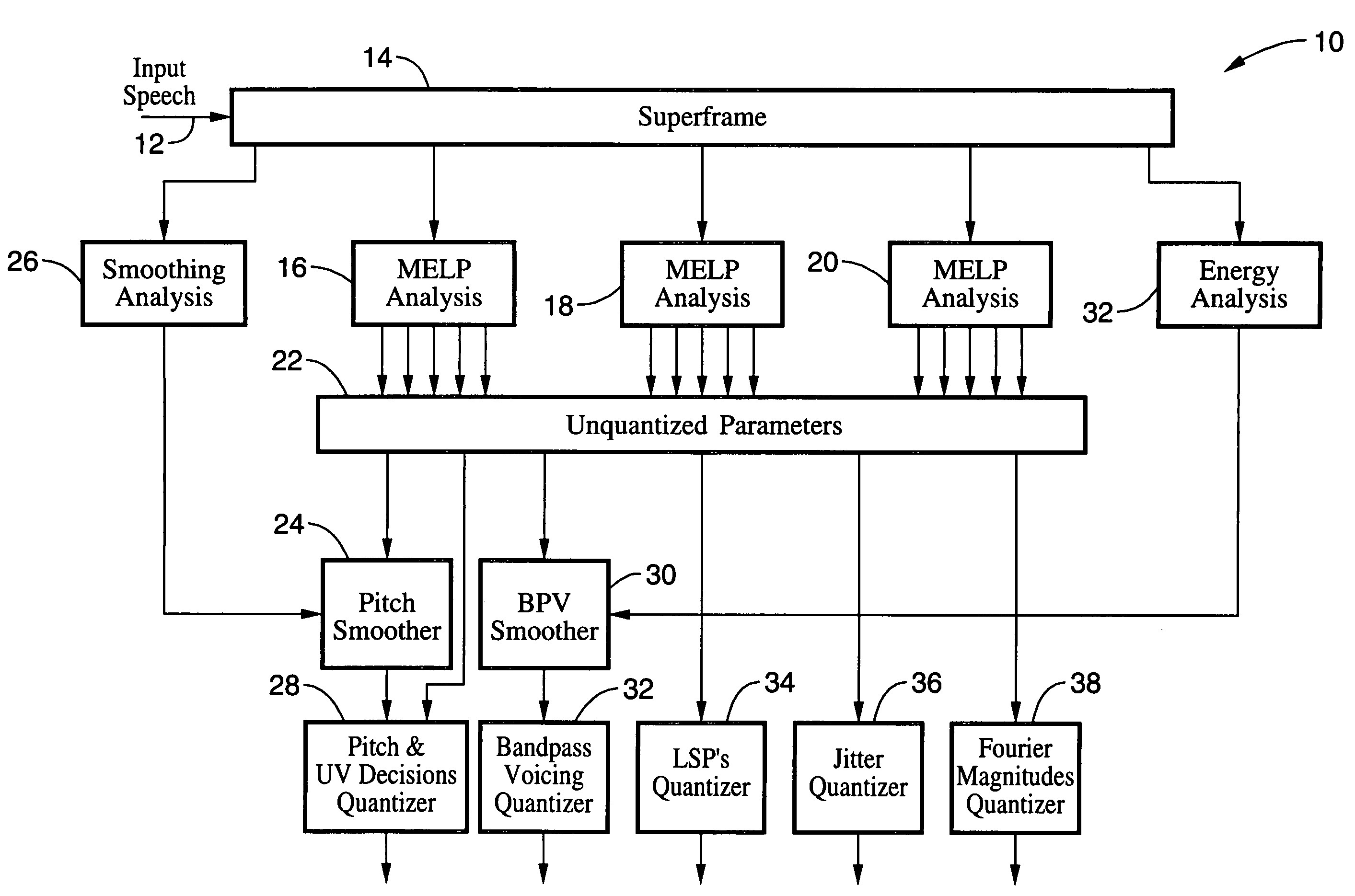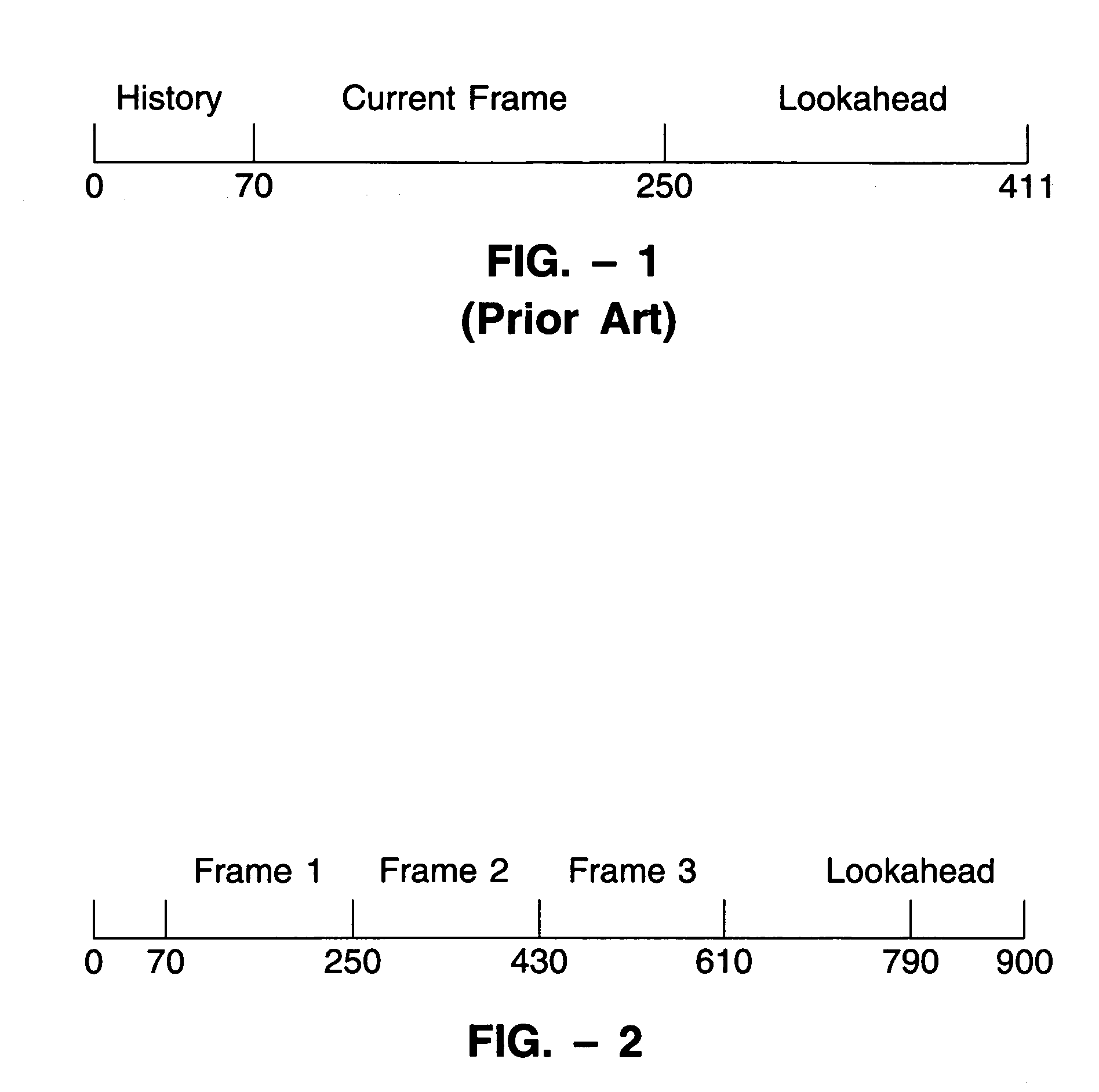LPC-harmonic vocoder with superframe structure
a superframe and harmonic vocoder technology, applied in the field of digital communication, can solve the problems of serious degradation of the synthesized speech for that superframe, and achieve the effects of reducing complexity, improving the performance of the melp encoder, and maintaining the quality of synthesized voi
- Summary
- Abstract
- Description
- Claims
- Application Information
AI Technical Summary
Benefits of technology
Problems solved by technology
Method used
Image
Examples
Embodiment Construction
[0051]For illustrative purposes the present invention will be described with reference to FIG. 2 through FIG. 6. It will be appreciated that the apparatus may vary as to configuration and as to details of the parts, and that the method may vary as to the specific steps and sequence, without departing from the basic concepts as disclosed herein.
1. OVERVIEW OF THE VOCODER
[0052]The 1.2 kbps encoder of the present invention employs analysis modules similar to those used in a conventional 2.4 kbps MELP coder, but adds a block or “superframe” encoder which encodes three consecutive frames and quantizes the transmitted parameters more efficiently to provide the 1.2 kbps vocoding. Those skilled in the art will appreciate that although the invention is described with reference to using three frames per superframe, the method of the invention can be applied to superframes comprising other integral numbers of frames as well. Furthermore, those skilled in the art will also appreciate that altho...
PUM
 Login to View More
Login to View More Abstract
Description
Claims
Application Information
 Login to View More
Login to View More - R&D
- Intellectual Property
- Life Sciences
- Materials
- Tech Scout
- Unparalleled Data Quality
- Higher Quality Content
- 60% Fewer Hallucinations
Browse by: Latest US Patents, China's latest patents, Technical Efficacy Thesaurus, Application Domain, Technology Topic, Popular Technical Reports.
© 2025 PatSnap. All rights reserved.Legal|Privacy policy|Modern Slavery Act Transparency Statement|Sitemap|About US| Contact US: help@patsnap.com



